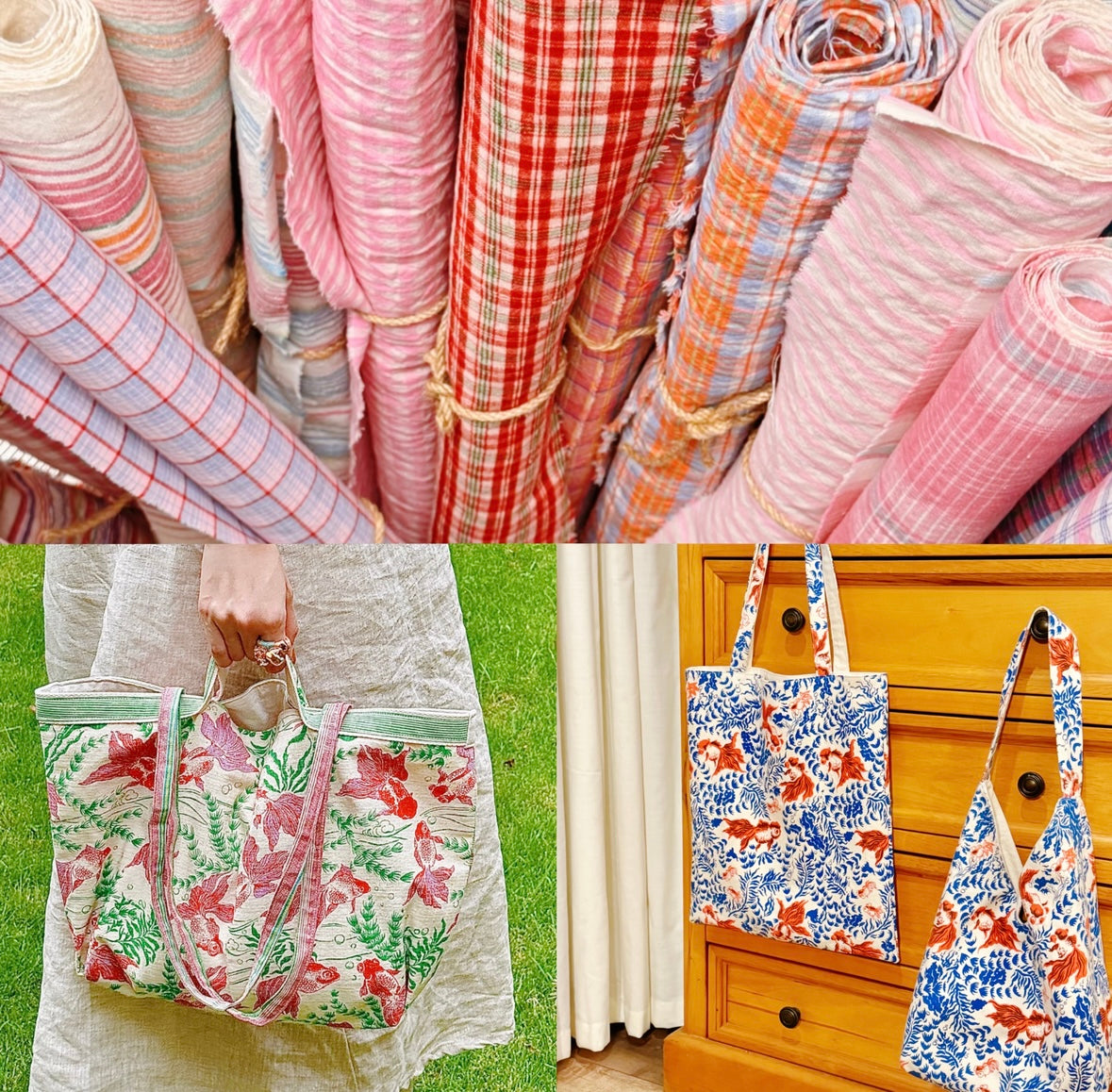Chongming Old Cloth: One Inch of Fabric, One Moment of Tender Time

At the easternmost edge of Shanghai lies Chongming Island — a land surrounded by river water, known not only for its rice fields and reeds but also for nurturing a century-old intangible cultural heritage: Chongming Old Cloth.
This handwoven cotton fabric, made with traditional shuttle-weaving techniques, carries the wisdom of farmers and the devotion of craftsmen in every thread.

Chongming Old Cloth is renowned for its thick texture, natural hues, and rich patterns. Depending on the weaving technique, it is classified into “two-page brown,” “three-page brown,” and “four-page brown.” Each bolt of cloth breathes with the rhythm of interwoven warp and weft, its soft texture and warm tones reflecting the passage of time.

In China’s long history of textile craftsmanship, every region has developed its own distinctive weaving techniques:
Guangdong has Xiangyun Silk, as light as mist;
Guizhou has Batik, brilliant in color;
Nantong has Blue Printed Cloth, rustic yet elegant.
Together, these represent the radiant constellation of Eastern textile aesthetics.
Just as Japan has the kimono, Scotland its tartan, Korea its hanbok, and the Philippines its Saya skirt, Chongming Old Cloth embodies the gentle resilience and quiet strength of Chinese culture.

In the past, Chongming Old Cloth was a staple of rural life — used for clothes, quilts, and pillow covers.
Today, designers and artisans are giving it new life. It is no longer confined to clothing but has become a modern interpretation of a lifestyle rooted in tradition.
Tablecloths and Tea Mats: The natural texture and soft touch of cotton bring a sense of warmth and simplicity to dining tables and tea spaces.
Book Covers and Bookmarks: Wrapping a book in old cloth transforms reading into a tactile conversation with time.
Textile Decorations: A small piece of handwoven cloth can be affixed to a mirror’s edge or wrapped around a copper lipstick tube, creating a unique, vintage beauty.
Fabric Pouches and Gift Wraps: Made into small reusable bags or wrapping cloths, Chongming Old Cloth expresses an eco-friendly and aesthetic way of living.
Home Textiles: Cushion covers, wall hangings, curtains, and bedsheets — handwoven textures that bring warmth and calm into the modern home.

Its charm lies in balance — simple yet poetic, traditional yet contemporary — reflecting a shift from “fabric for daily use” to “fabric as a way of life.”
In Sanmin Village of Chongming, the rhythmic creak of old wooden looms can still be heard. The weavers — women with steady hands and gentle eyes — move the shuttles skillfully, weaving time into fabric. Meanwhile, a new generation of designers draws inspiration from Chongming Old Cloth, bringing it into fashion, home design, cultural creations, and art exhibitions, allowing this woven culture of everyday life to shine anew.

Through productive preservation and creative development, Chongming Old Cloth is no longer just a symbol of intangible heritage — it has become a living, touchable, and sustainable vessel of culture.
It invites us to reflect:
In an age overwhelmed by machinery and fast consumption, could the handmade, the slow, and the authentic bring us closer to the true essence of life?

A fabric that holds warmth, a land that remembers.
Born from the soil and destined to return to it, Chongming Old Cloth symbolizes the cycle of nature, the dialogue between craft and time, and a gentle yet steadfast cultural belief.

When you encounter a piece of Chongming Old Cloth in the city, it is not merely a textile — it is a living piece of history, an extension of in-place culture, and a poetic touch of life worth cherishing.
— Made in Place

0 comments